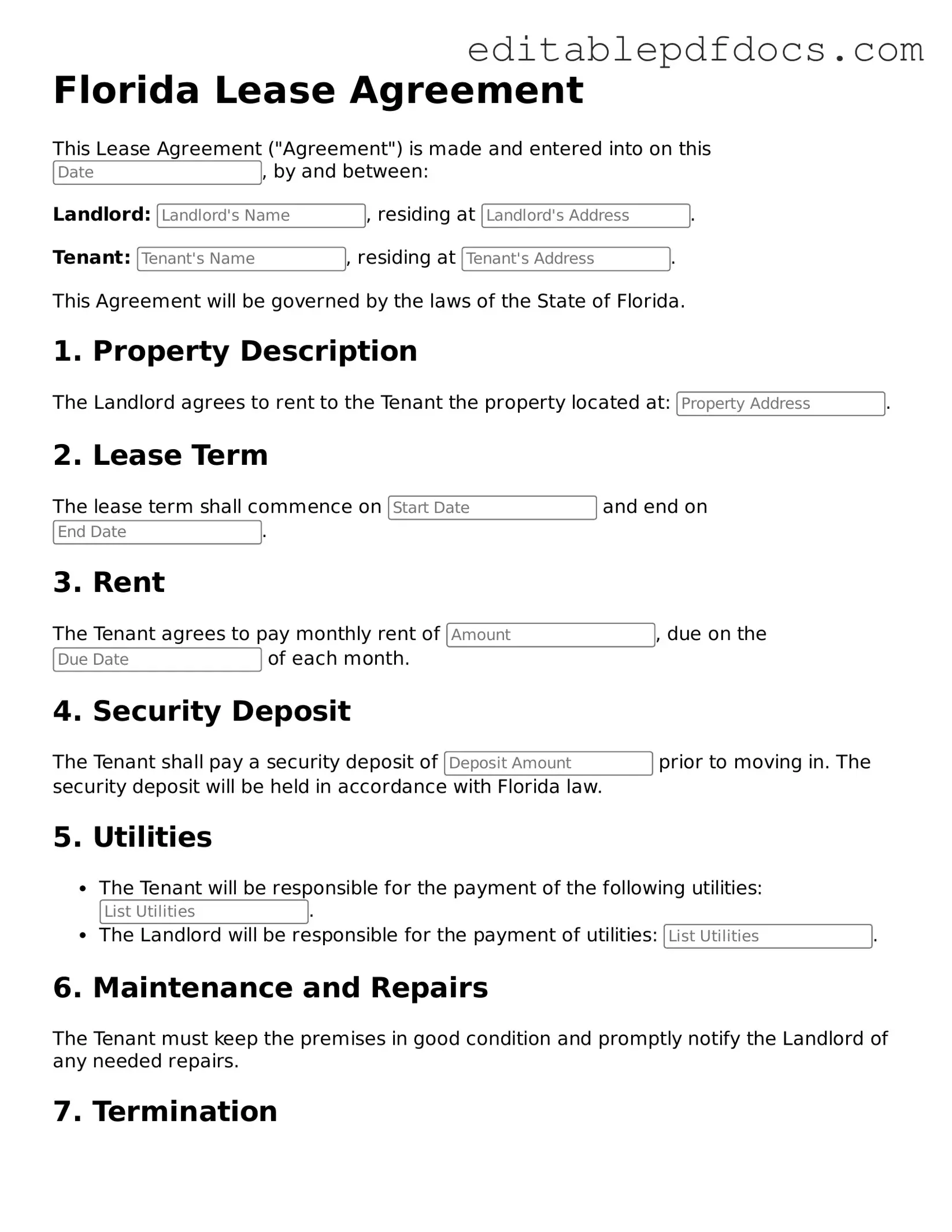Filling out a Florida Lease Agreement can be a straightforward process, but there are common mistakes that many individuals make. These errors can lead to misunderstandings or legal issues down the line. Awareness of these pitfalls is essential for both landlords and tenants.
One frequent mistake is failing to include all necessary parties in the agreement. Whether it’s a roommate or a co-signer, each person involved should be clearly named. Omitting someone can create confusion about responsibilities and rights. This oversight can complicate matters if disputes arise later.
Another common error is neglecting to specify the lease term. A lease can be month-to-month, yearly, or for a specific period. Not defining the duration can lead to uncertainty about when the agreement ends and what happens next. Clarity in this area is crucial for both parties to understand their commitments.
People often overlook the importance of detailing the rent payment terms. This includes the amount due, the due date, and acceptable payment methods. If these details are vague or missing, it can lead to disputes over late payments or misunderstandings about how and when to pay.
Additionally, many individuals fail to outline maintenance responsibilities. Who is responsible for repairs? What happens if something breaks? Not addressing these questions can lead to frustration and conflict. Clear definitions help ensure that both parties know their obligations.
Finally, some lease agreements lack clarity on rules regarding pets or guests. If a landlord has specific policies, they should be included in the lease. Without these stipulations, tenants may assume they can have pets or guests without restrictions, which could lead to violations and penalties.
By avoiding these common mistakes, both landlords and tenants can create a more effective and harmonious leasing experience. Attention to detail in the Florida Lease Agreement form is key to ensuring a smooth relationship.
